Will the auto industry change the Lidar market?
Automatic driving is a golden opportunity for laser radar
Today, vendors such as Waymo, Uber, Lyft, Baidu, and Mercedes-Benz are integrating various sensors worth approximately US$200,000 into hundreds of conventional vehicles. In an attempt to turn it into a fully self-driving car that can be driven on the road, that is, a driverless car. For example, Waymo has provided services to some users and is integrating various sensors such as LiDAR, RADAR, cameras, Inertial Measurement Unit (IMU) and GPS. Overall, the market for unmanned cars is expected to exceed 100,000 by 2023 and by 12000 by 2032.
The current global automotive market sells about 9,000 vehicles a year, and the automatic driving function is gradually becoming a new trend. In 2017, Audi released the world's first mass-produced Level 3 self-driving car, the Audi A8. Of course, it is also the world's first production car equipped with a laser radar. The Lidar used in the car was developed and produced by Valeo, a leading automotive parts manufacturer in France.
According to the consulting report of Themes, the laser radar technology has been applied to many fields such as aerospace, science and technology archeology, building surveying, and wind power industry. Currently, it is facing a huge opportunity: the desire of autopilot for laser radar. Yole expects that the global automotive laser radar market will reach 5 billion U.S. dollars in 2023 and 28 billion U.S. dollars by 2032.
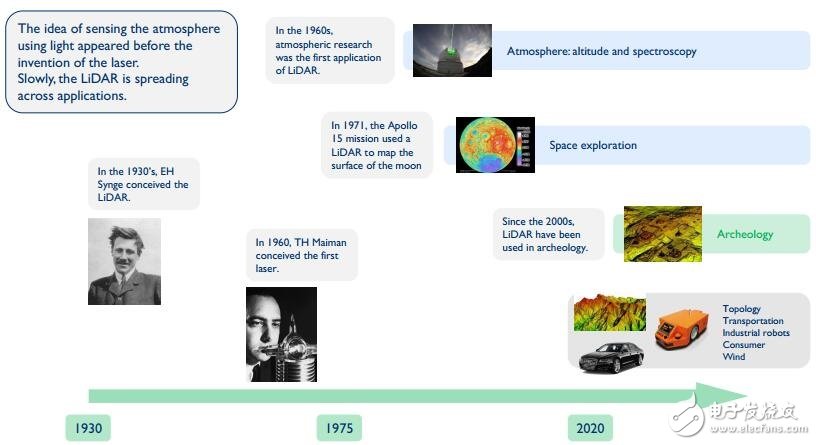
Lidar development history
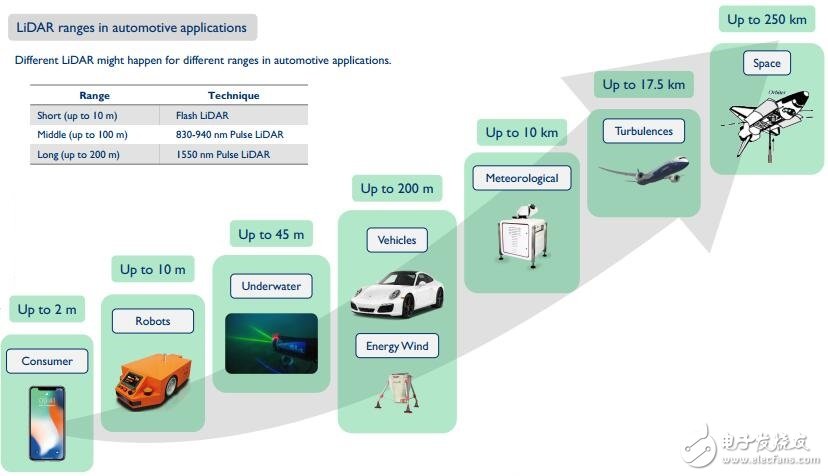
Range of different laser radars
This report covers the market size and shipments from the lidar system to the components, including an in-depth analysis of the development of the lidar market and the business opportunities for participants at each stage of the industry chain.
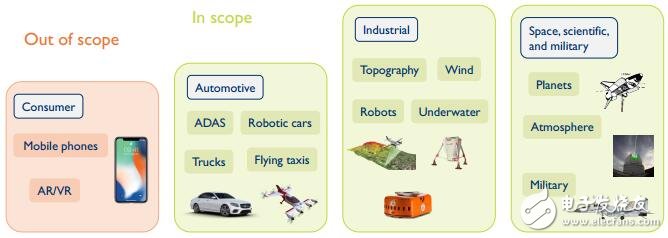
Research area of ​​this report
The impressive diversity of automotive laser radar
In the past two years, more than 800 million U.S. dollars have been invested in the company. Although many companies have very short business hours, they have completed tens of millions of dollars in financing. According to the consulting team from Maims, Blackmore was founded in 2016 and recently obtained 18 million US dollars from BMW and Toyota. Quanergy, established in 2012, completed a $180 million financing in 2017. These investment and financing events show that the automotive laser radar technology is not yet mature. Start-ups, industrial companies, Tier 1 suppliers, and automotive OEMs all use different approaches to investing, but success is still unknown. However, if you want to become a leader in automotive laser radar technology, you must pay a certain price.
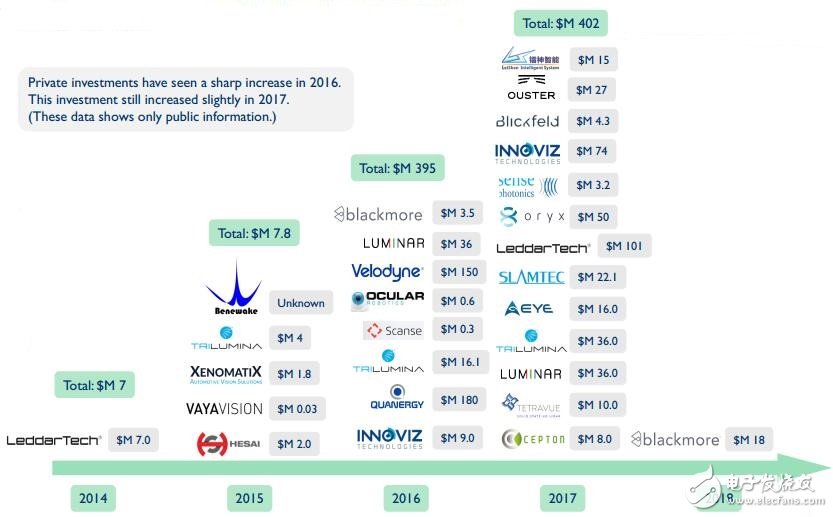
Laser radar industry major investment and financing events
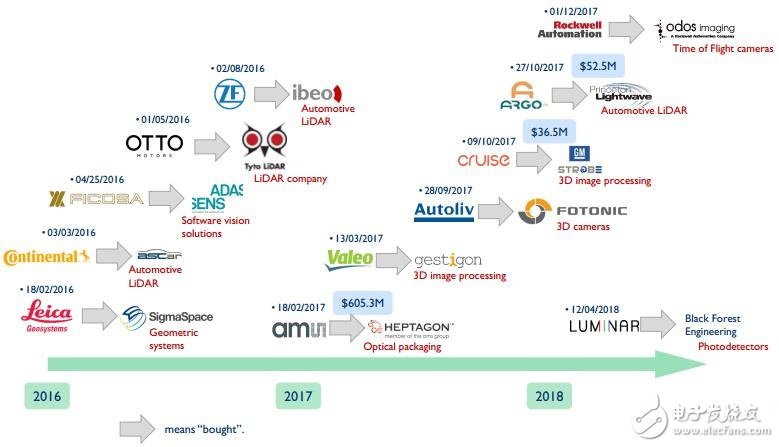
Major Mergers and Acquisitions in Lidar Industry
On the technical side, the rich product types are impressive. Most current laser radar products use lasers with wavelengths between 830 and 940 nanometers, as well as macro-mechanical scanning, such as those released by Velodyne. However, MEMS scanning mirrors are expected to become the next development direction of automotive laser radar technology, which can make laser radar smaller and cheaper. Since then, it may have been Quanergy's proposed optical phased array, which does not have any moving parts and can implement true all-solid-state lidars, so it is more reliable, and smaller and cheaper.
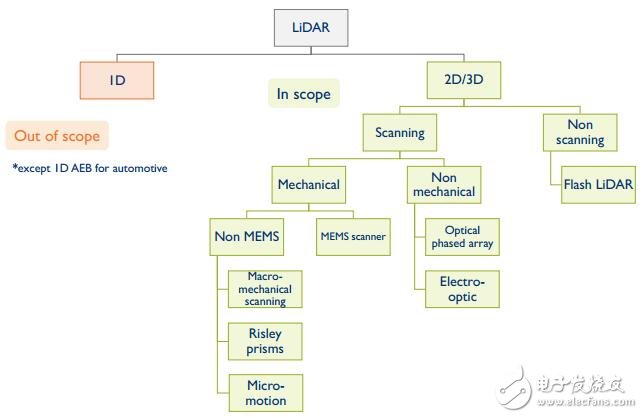
The technology studied in this report
Some manufacturers, such as ConTInental and XenomaTIx, have proposed flash lidars, which do not have any moving parts and use lasers to illuminate the entire scene at the same time. Other vendors have proposed different solutions: Cepton and Luminar have published micro-moTIon scanning technology similar to MEMS scanning mirrors, while Neptec has adopted Risley prisms.
Although many manufacturers use wavelengths of 830 to 940 nanometers (because the corresponding optical components are more common), some manufacturers (such as Blackmore, Neptec, Aeye, and Luminar) are studying wavelengths of 1550 nanometers. This wavelength of laser allows higher pulse power to be provided to dark objects within a detection range of 200 meters, enough to allow vehicles in the highway to detect dangerous situations and stop safely in a fast driving; at the same time, this wavelength of laser can be seen by the eyeball. Absorbed strongly so as not to damage the retina; finally, using this wavelength of Lidar is better in terms of dust robustness.
Diversity continues. Most automotive laser radar manufacturers use pulsed direct-detection laser radar, which means that light pulses are sent to the target and the photodetector is used to measure the time required to calculate the distance. Some manufacturers are studying CW ranging methods. For example, IFM and Benewake are studying phase shift ranging methods, while Blackmore and Oryx are studying frequency modulation ranging methods.
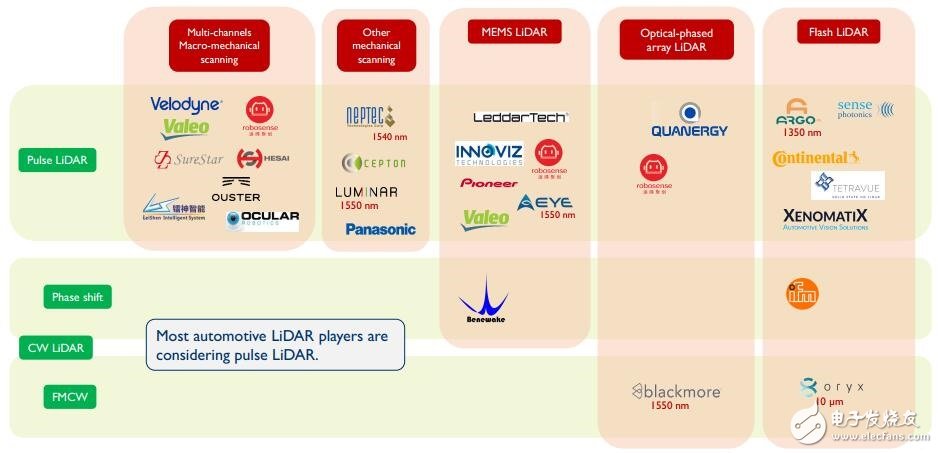
The main manufacturers of automotive laser radar
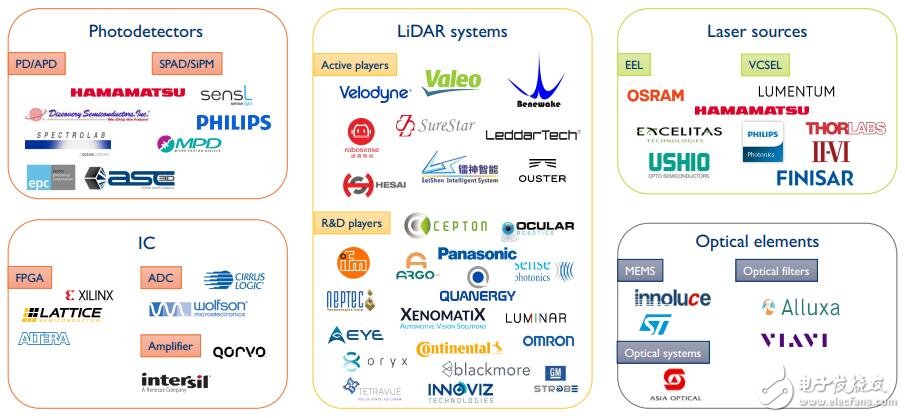
Automotive Laser Radar Ecosystem
This report provides a technical analysis of each method, as well as a roadmap for development, cost, and market penetration estimates. In addition, the market development of each technology type was analyzed.
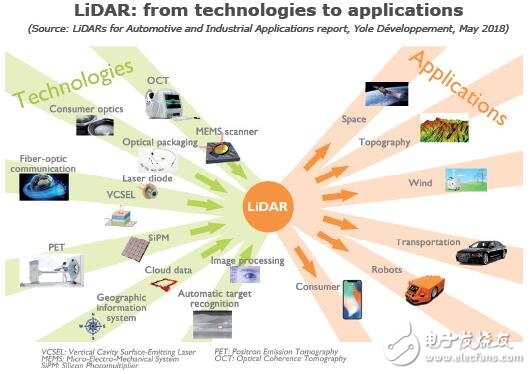
Lidar: From Technology to Application
Will Lidar enter the mass market?
There is no doubt that automotive laser radar is currently rapidly developing, but there are alternatives. Tesla announced that it will not use laser radar for autopilot, and TuSimple is developing a self-driving truck without a lidar. In addition, the recently released Cadillac Super Cruise system mainly relies on maps. In terms of technology, because of the deflection of the laser beam, the automotive laser radar obtains imaging capabilities. Visual processing and artificial intelligence are helping Lidar to better detect and classify target objects to understand three-dimensional space. In addition, infrared cameras can also meet night vision applications. All these technologies have been increased at an astonishing rate, creating a highly competitive space for laser radar manufacturers. Therefore, it is still too early to determine which technology will eventually "rule" self-driving cars. However, we believe that the redundancy and complementarity among various sensors must be taken into account in auto-piloting!
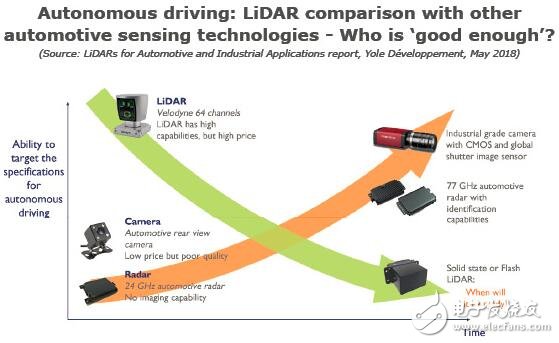
Autopilot: Lidar vs. Other Sensors
The emerging field of application of Lidar is not limited to cars. The technology is increasingly used in building and geographic information systems and is also a key component of automatic guided vehicles (AGVs) to help automate warehouses. In addition, laser radar is expanding its application in wind measurement and gradually becoming an indispensable element of wind farms.
Autopilot has become one of the most concerned technologies in the current automotive industry and even in the entire technology industry; driverless technology has also changed from crazy science fiction ideas to the future of the automotive industry. Not surprisingly, autonomous driving technology will be widely seen in our lives, but there are still real difficulties in the bright future. Lidars that provide 3D visual functions for automobiles are key technologies for solving the difficulties of autopilot. How will the car develop in the future? Let us wait and see!
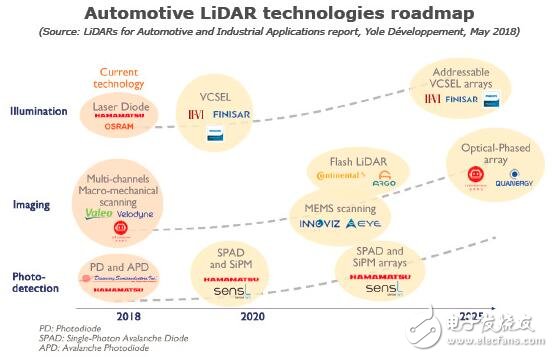
Automotive Laser Radar Technology Development Roadmap
Which size you prefer when looking for an android tablet for students take online learning? 10 inch android tablet, 8 Inch Tablet , 7 Inch Tablet, or others? Frankly speaking, 8 inch android tablet is the most competitive student tablet, no matter size, lasting time, screen size, cost, etc. Therefore, 8 inch android tablet price is the device balancing quality and cost at top. Of course, 5g android tablet also available as well. As a professional manufacturer, more designs are under-developing, you can also share the design, parameters needed, then our team customs for you.
The another target clients is the reselling or importing wholesales. So if you are doing android tablet deals, this store also brings surprise when take a deep checking, not only different size education tablet, but also windows tablet, or tablet 2 In 1 Laptop with android os or windows OS.
Except tablets, you can also see 14.1 inch celeron Education Laptop, 15.6 inch celeron business laptop, 15 inch Gaming Laptop with intel core i3, i5 or i7, 16.1 inch i7 16gb ram 4gb graphics laptop, etc.
Android Tablet,10.1 Android Tablet,Android Tablet Price,5g Android Tablet,Android Tablet Deals
Henan Shuyi Electronics Co., Ltd. , https://www.shuyitablet.com